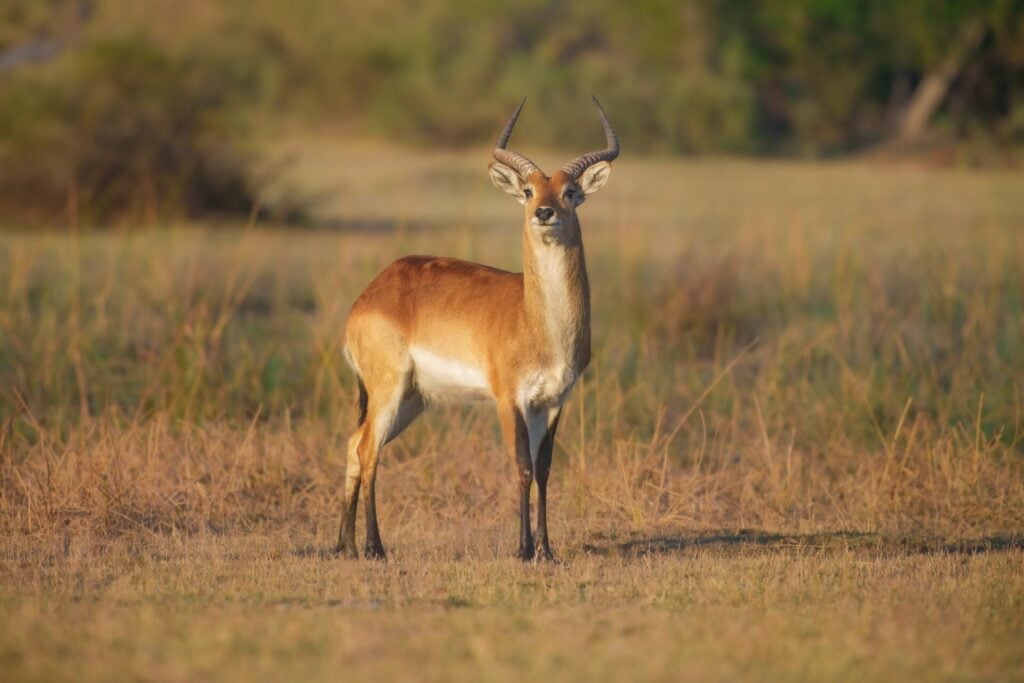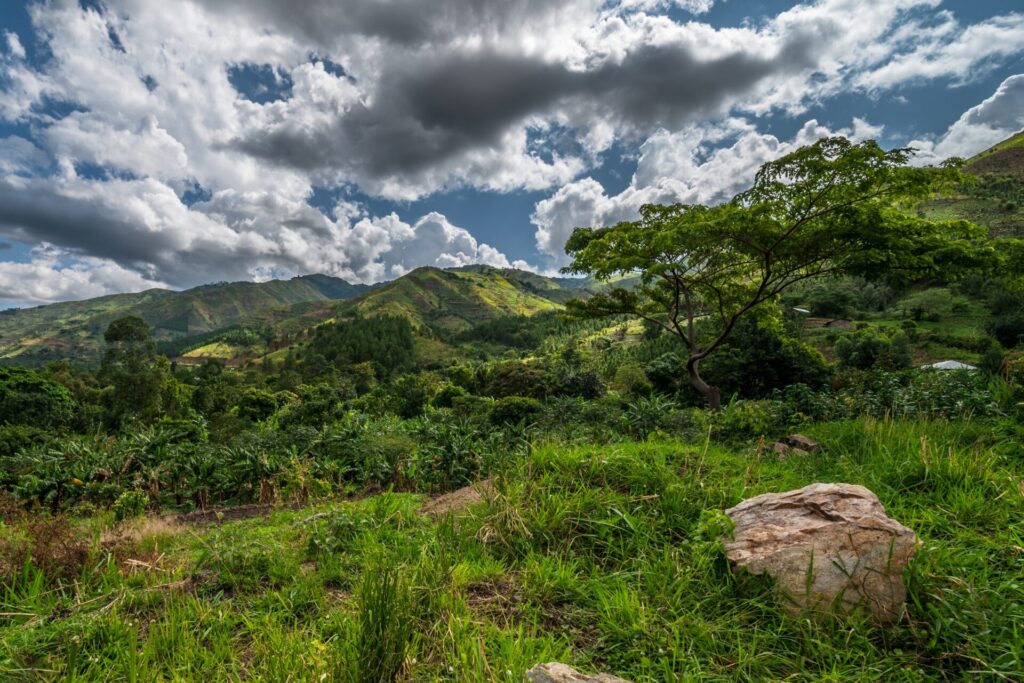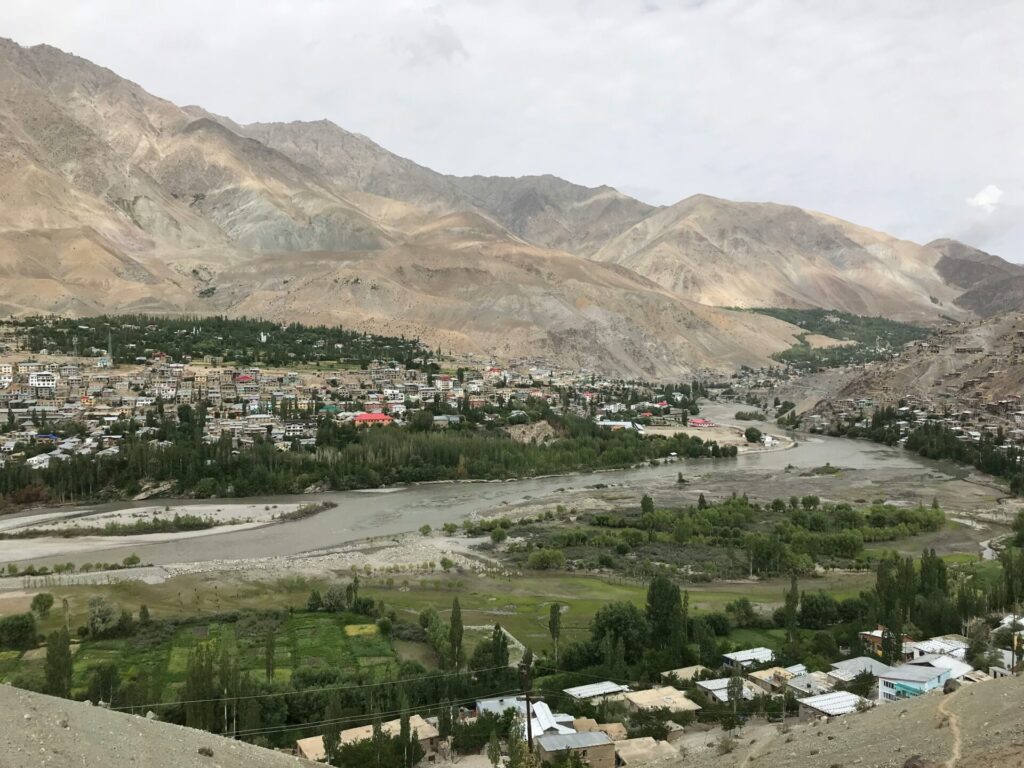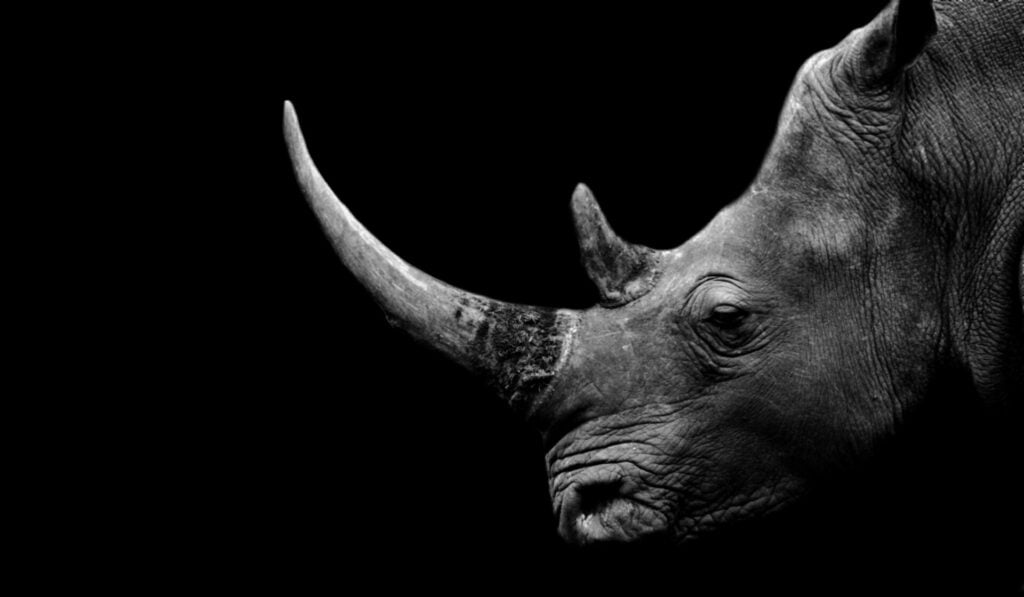A photograph of what has become known as ‘Africa’s forgotten antelope’ has been published for the first time. Fewer than 100 of the extremely elusive Upemba lechwe are thought to remain in the wild, roaming in wetlands in southern Democratic Republic of the Congo.
A recent aerial survey in the Kamalondo Depression spotted 10 of the endangered animals. Nine raced rapidly out of sight, but one stopped for an instant, looking up.
Manuel Weber, of Upemba National Park’s Department of Research and Biomonitoring, managed to snap a quick picture, the first photo taken of a living Upemba lechwe since it was identified as a subspecies in 2005 following examination of skeletal remains housed in natural history museums.
The antelope stopped for ‘literally a few seconds’, he said.

Weber explained: ‘The feeling was unbelievable, I barely slept the nights before we found it, very worried that we would not be able to do the survey, that we would not find any, and the need to get that photograph to generate the awareness needed to save them.
‘This is a species on the very brink. The fact that they’re still hanging on at all is extraordinary, but without urgent protection, they’ll vanish.’
Dire decline of Upemba lechwe
The Upemba lechwe is now considered one of the world’s rarest large mammals and is at imminent risk of extinction due to illegal poaching.
Weber said. ‘Up to 22,000 individuals were counted in the early 1970s, that was before the Upemba lechwe was described as a species. In the early 1990s, the meat of dozens was shipped every week to Bukama, the largest city in the area, along the Lualaba River.

‘I don’t see any problem with meat harvesting by the communities in the landscape, but this is only possible when we have viable populations. The question is, how do we get back to those?’
The scientists urge rapid intervention to protect the last animals of their kind, and hope that this photograph, published first in the African Journal of Ecology, helps galvanise attention and resources to the forgotten antelope.
‘I knew that we needed that photograph – otherwise we would have no way to get any media attention for the cause, and I was devastated after the first day, since we did connect with a few Upemba lechwe, but they were running for their life, so no way to capture them on camera,’ Weber explained.
‘It was in the morning of the second day, that a single individual stopped for just a few seconds, long enough for me to press the trigger, before running off like the other individuals we have seen.
‘We hope this image becomes a rallying cry. Because this may be our only chance to save this species.’









